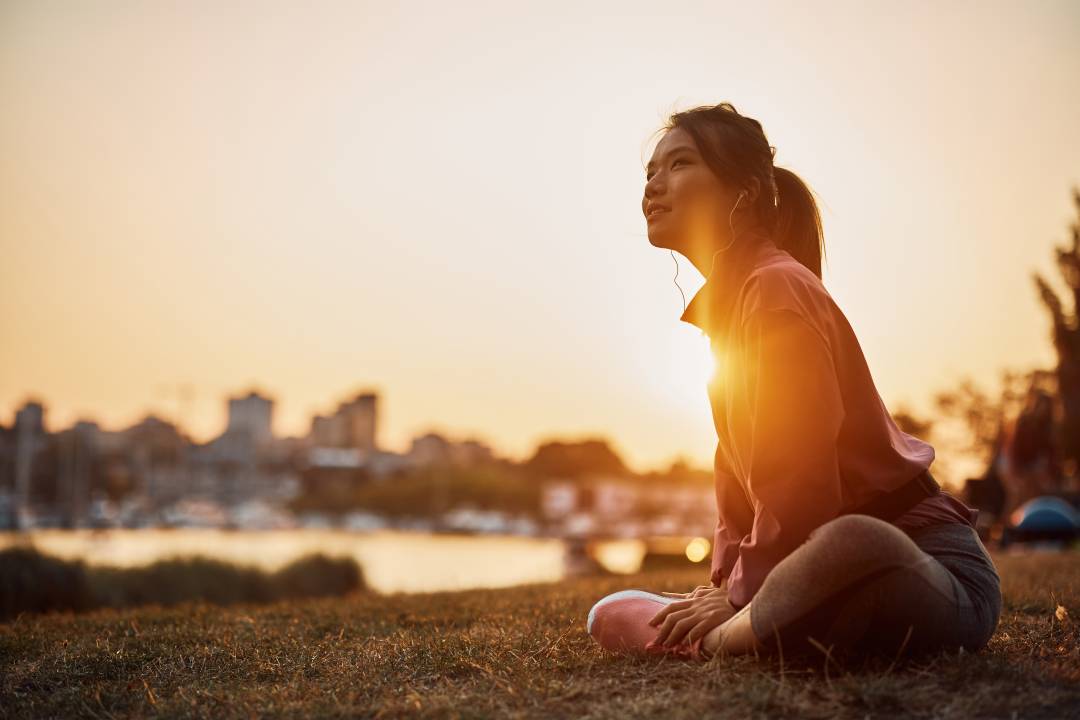Occasional anxiety is a normal part of life and is your body’s way of responding to or helping you prepare for potentially challenging situations. In normal circumstances, mild anxiety can increase alertness and help you focus so you can face the trial at hand. Unfortunately, anxiety can become more than just an occasional part of life. For some, it’s a chronic, seemingly ever-present feeling that disrupts their ability to live normally and function optimally. People with chronic anxiety frequently worry or feel dread about everyday situations they might encounter.
Anxiety disorders are becoming increasingly common in the United States, with as many as 19% of adults struggling with one. If you’re one of them, you probably long for a lasting reprieve from your debilitating worries. Fortunately, researchers have found reliable ways to soothe persistent feelings of unease and nervousness. Here are five science-backed strategies to reduce anxiety once and for all and build lasting inner peace.
1. Talk It Out
Talking is such a simple action, but it can have a profound impact on those who wrestle with anxiety disorders. Sharing negative emotions with someone you trust can be incredibly healing, especially if you know that person won’t judge you unfairly. If you have a close friend or family member who’s willing to lend a listening ear, don’t be shy. Talk to them about how you’re feeling and what you’re worried about. You’ll feel better after letting it all out, and they’ll have a better understanding of what you’re going through.
While talking to a close friend can have a positive impact on your anxiety levels, it’s even better to talk to a professional. Skilled talk therapists know how to utilize various techniques to help you understand the underlying cause of your anxious feelings. They can also give you coping mechanisms and exercises to develop greater mental resilience. If you’re concerned about money, you can find affordable therapy options online. Remember, your mental health and peace are worth paying a reasonable price for regular therapy sessions.
2. Work Up a Sweat
When you’re feeling worried and uneasy about something in your life, exercising is often one of the last things you want to do. Instead, you may feel tempted to isolate yourself in your bedroom, where you’re less likely to experience anything scary or overwhelming. However, remaining sedentary will likely exacerbate your symptoms. When you feel anxious, moving your body is one of the best things you can do. Regular exercise has indisputable physical health benefits, but evidence also suggests that it can protect against mental disorders, as well.
Strong science-backed research reveals that regular exercise leads to reduced anxiety in clinical settings. It also improves self-esteem and feelings of well-being. Adults who regularly engage in physical activity experience fewer symptoms of stress and anxiety. There isn’t a particular type of physical activity you need to engage in to get mood-boosting benefits. Feel free to swim, dance, run, hike, or engage in any other challenging activity you enjoy.
3. Slow Your Breathing
Breathing is such a natural, automatic process that few people ever think about it. However, if you focus on your breathing when you’re feeling anxious and overwhelmed, you’ll probably notice it’s rapid and shallow. That’s because your body has activated its fight-or-flight response, and it’s preparing you to face a real or perceived threat. Unfortunately, rapid and shallow breathing serves to amplify feelings of stress and can cause you to feel dizzy and disoriented.
The next time you feel stressed, take a time-out from everything that’s going on around you and focus entirely on your breathing rate. Try the 4-7-8 technique to slow your breath. To do this, inhale deeply for 4 seconds, hold your breath for 7 seconds, then exhale for 8 seconds. This may be challenging at first, but it should become easier as your anxiety levels decrease. For the best results, try to draw your breaths deep into your diaphragm instead of just filling your lungs.
4. Take a Cold Plunge
Did you know you can use cold temperatures to trick your body into thinking it’s not anxious? Exposing all or part of your body to sudden cold temperatures triggers a reflex scientists call “the mammalian dive reflex.” This physiological response can be observed in all mammals when submerged in cold water. Your body responds to the shock of the cold plunge by conserving oxygen and slowing its heart rate. This is a great technique to use when you’re experiencing emotional stress, panic attacks, or feelings of overwhelm.
To trigger your body’s mammalian dive reflex, fill a sink with cold water, then take a deep breath and put your face into it. Try to hold your face in the water for 25 seconds to optimize the relaxing effects of this exercise. This technique is highly effective at rapidly reducing severe anxiety symptoms. However, it shouldn’t be performed by anyone with cardiac problems.
5. Soak Up the Sun
Research shows that humans can’t live healthy lives without sunlight exposure. Sunlight impacts mental health and anxiety levels in profound ways. When your skin is exposed to sunlight, it responds by producing an important vitamin called vitamin D. Research links higher vitamin D levels to reduced symptoms of anxiety.
Sunlight exposure may also reduce anxiety by promoting serotonin production in the body. Serotonin is a hormone that’s associated with feelings of euphoria and well-being. If you frequently feel anxious, get outside more often and enjoy the mood-boosting benefits of sunlight exposure.
Conclusion
There are a lot of potential triggers for chronic stress and anxiety, including genetics, environment, personality traits, and interpersonal issues. Fortunately, there are plenty of tools you can utilize to kick anxiety to the curb and reclaim your happiness. Utilize these five science-backed strategies to reduce anxiety and build inner peace.
Read More: Pravi Celer: Your Weekly Diet for maximum Growth Performance
















